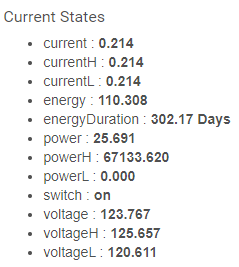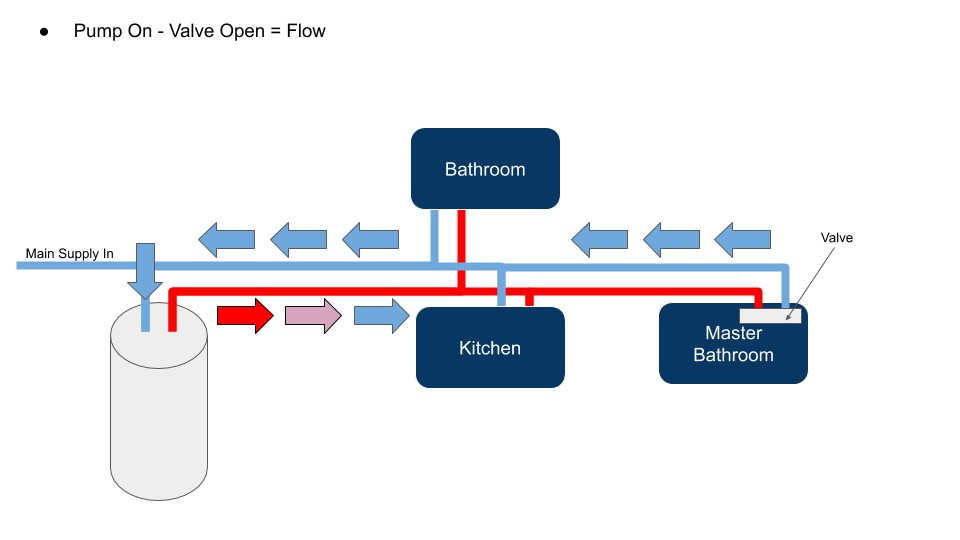DIY Install Watts Hot Water Recirculation Pump

The Watts Premier 500800 hot water recirculation pump is a device that helps ensure that you always have hot water at your faucets. It’s an ingenious gadget that serves you well for both in home comfort and a reduced water bill. I know that I get pretty tired of waiting for hot water whenever I’m trying to wash my hands or take a shower. Especially in the winter months when the water is ice cold coming from the tap. And in my opinion, dumping gallons of water down the drain is not an effective water conservation strategy in drought stricken areas.
 |

|
 |

|
Overall Rating 
Even if you are not interested in any kind of advanced automation, this thing is awesome. Having instant access to hot water at all times in very comforting as is knowing that I don’t have to leave the shower running for several minutes in the winter months. I honestly don’t know how I lived without it for so long.
This particular pump (and pumps like it) install at the hot water heater. This is a safe bet since you probably already have an electrical outlet nearby. If you don’t, this becomes problematic and you may need to call an electrician to install an outlet for you. There are other pumps that install directly under the farthest sink. This is better than the pump-at-the-heater method in that the unit itself has direct control over the pump and the water valve.
The problem with the pump-at-the-sink type is that a) it takes up a lot of space that is typically used for storage, and b) you usually don’t have power under the sink. Going this route requires a GFI outlet to be installed, which is very much a pain in the butt.
So in my opinion, the pump-at-the-heater style is the easiest and most affordable method for the DIY installer.
How it Works 
The system consists of two components: 1) the pump; and 2) the valve. When all faucets are closed, there is a closed loop between the hot and cold side of the hot water heater. The system uses this closed loop to push hot water from the water heater through the valve and back to the water heater.
The pump is either running or not (without respect to the value) and the valve is either open or closed (without respect to the pump running). This means that if the pump is running and the valve is closed, there is no circulation.
 Once the valve senses that the water on the hot side of the valve is too cold, the valve opens. The pump then pushes water down through the hot pipes, through the valve and it returns through the cold water pipes. Since there is not a vacuum (of sorts) in the tank, the water from the cold side is pulled into the tank (as opposed to being replenished from the main water supply line). When the valve senses that the water is getting warm, the valve closes.
Once the valve senses that the water on the hot side of the valve is too cold, the valve opens. The pump then pushes water down through the hot pipes, through the valve and it returns through the cold water pipes. Since there is not a vacuum (of sorts) in the tank, the water from the cold side is pulled into the tank (as opposed to being replenished from the main water supply line). When the valve senses that the water is getting warm, the valve closes.
The pump has a built-in timer to shut it off at certain times during the day, or you can leave it running all the time. As shown in the video, I use home automation to control the pump for better control over when it’s on and off. This means I leave the timer set to Always On and then I use a Zooz ZEN15 Z-Wave Plus smart switch with energy monitoring to control when the pump turns on and off. You can use any type of smart appliance switch with some rules and/or automation to achieve the same thing.
The pump has an internal bypass so that if the valve is closed, the water goes nowhere (stays in your hot water heater).
Energy Usage 
As I mentioned, I’m using the Zooz ZEN15 to control and monitor the pump. The pump draws about ~0.2 amps (~26 watts) when running. This is roughly equivalent to three 8 watt LED light bulbs. Not a lot in my opinion for all that your getting out of the deal.

Water Savings 
Of course, all houses are different in terms of how long you would wait for the water to warm up. I’ll leave it up to you to figure it out. Here are some useful numbers to get you going.
- A modern standard flow shower head delivers 2.5 gallons per minute
- A modern low-flow shower head delivers 2 gallons per minute
- A 3/4″ copper pipe holds 2.295 gallons per every 100 feet
- A 1/2″ copper pipe holds 1.02 gallons per every 100 feet
So assuming that you have 1/2″ distribution lines and your shower is 50 feet away from the water heater, you would need to clear about a 1/2 gallon of water from your pipes (down the drain), which would take about 12 seconds. If you do this every day, you’re dumping 182 gallons down the drain every year. Multiply that times the number of people in your house. A family of four would be dumping a mere 744 gallons down the drain.
But the math isn’t that simple. You need to throw in a few more considerations. In the winter, how long do you wait for the water to warm up at the faucet when washing your hands? We would assume that you wash your hands more frequently than you shower. Maybe multiply that number by three or four. Also, most people that wait for the water to warm up don’t just stand there and wait (at least I didn’t). I would turn on the water, go do other stuff, and then jump in the shower. I’d maybe spend two or three minutes putzing around while the shower was running. Figure I waited two minutes. Instead of the 0.501 gallons, I was dumping 2.5 gallons. If my family of four did the same thing, my 774 number per year suddenly turns into 3,650 (2.5 x 365 x 4) gallons per year, just for the shower. I read an article that estimated that a family of four wastes on average 2,920 gallons per year just waiting for the shower. My numbers aren’t too far off. Again, if you add in hand washing you can easily see where the number gets closer to 10,000 gallons per year.
Common Questions
What do I do if there is more than one main water branch in my home?
You can buy extra valves and install these at the furthest sink from the water heater on each branch.
Where does the water go if the faucets are closed?
The pump has an internal bypass so the water goes nowhere. It stays in your water heater waiting on the demand from the faucet.
How does the water get back to the hot water heater?
See the figures above. It travels from the water heater, through the hot water pipes, through the valve, back through the cold water line, and then back into your hot water heater.
Can I use this with a tankless system?
I have seen conflicting information on this topic. The best advice would be to contact the manufacturer of the tankless system and see what they say. In theory it’s possible, but there are a variety of reasons why manufacturers say don’t do it.
Did you have to empty the water tank when you installed the pump?
You do know that my only answer would be to follow the manufacturers instructions. That said I can tell you that when I installed mine, I didn’t drain it completely. I did 1) turn off my water main, 2) close the inlet valve to the heater, 3) opened all of my faucets, 4) drained several gallons from my heater. This ensured that no water would come up from the heater and no water came out of the return line when I removed it. I forgot to mention that I did shut off the gas and breaker. I personally didn’t drain it to empty. But you should since the manufacturer told you to.
END
